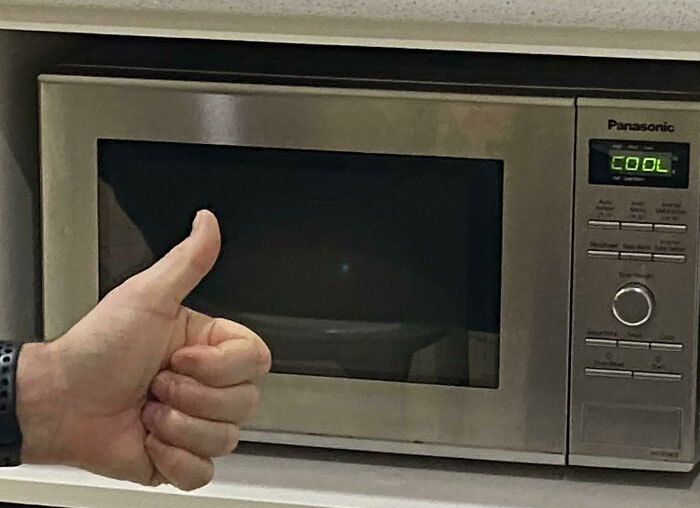Some tourists in the Museum of Natural History are marveling at some dinosaur bones. One of them asks the guard, “Can you tell me how old the dinosaur bones are?”
The guard replies, “They are 65,000,011 years old.”
“That’s an awfully exact number,” says the tourist. “How do you know their age so precisely?”
The guard answers, “Well, the dinosaur bones were sixty five million years old when I started working here, and that was eleven years ago.”
Sometimes expiration dates refer to when enough plastic from the packaging has decayed into the food material that it might be a problem. Bottled water works that way.
I don’t know:
- How much science there is behind the dating
- How much plastic you’re consuming in your food anyway and so who cares what’s the difference
- Whether that’s what’s going on with this salt package specifically
But it’s not automatically crazy for there to be an expiration date on an immortal product if it comes packaged up in plastic.
While I’ve always thought that, I’ve also heard that it’s the point where the plastic may not be reliable enough to contain or keep the contents uncontaminated. Either way, it’s the plastic.
You would think that the abrasive nature of the salt would shave off more plastic than the plastic breaking down. I guess you need to keep track of how many earth quakes you get and how much you shake the container when you get salt.
Now I am just annoyed not everything has a plasticless alternative packaging
And to think of how mad everyone got when everything was packaged in those ‘heavy’ glass bottles and jars, and manufacturers started putting everything into plastic because the glass was creating too much litter on the roads. Now here we are 30 years later and everyone is being killed by plastic.
manufacturers started putting everything into plastic because
the glass was creating too much litter on the roadsplastic was cheaper.Fixed. It’s always about profit.
It’s also lighter weight and thus cheaper to ship… But they promised that you totally couldn’t tell the difference in taste to food products! (Everybody could tell the difference)
It’s the same with packaged ice cubes.
The main Danish “bag of ice” seller takes chunks of thousands if not tens of thousands of years old Greenland icebergs and put it in a bag that displays a best before date 1 year after the bagging 😄
I’m no expert, but I did watch a minidocumentary that explained that these best by dates are mostly arbitrary aside from perishable foods.
For some products they’ll have taste testers rate the same product packaged at different times from 1-10 with 10 being factory fresh, and when it drops below an average of 7, that’s the date they put on the packaging
Yeah but this kind of salt they only taste test every half million years or so, so the expiration dates cant be trusted to be that precise.
You may have to wash the salt first
Yes, salt doesn’t go bad
But this looks like natural salt, so no preservatives 😁
Maybe they used natural preservation like, let’s say, salt? OP should check the ingredients
This comment is absolute gold.
Glad to be of service
It’s probably NaCl
What a salty response
From what I heard, salt is usually packaged with iodine or some substances that prevent clumping that expire over time. So after some time the salt won’t have those anymore, but it should be safe to consume. Salt cannot spoil because bacteria cannot grow in salty places.
Don’t know how plastic containers relate to that sadly.
Iodine in salt is a health measure, people were not getting enough iodine, so they added it to the salt
But that’s not going to degrade.
I get plenty of iodine, you just have to live in Pripyat and you can breathe the stuff!
Just get a taste of that fresh, metallic air!
The label says it’s 100% uncontaminated though 😂
Well, I understand that with some years in an plastic bowl, the salt may absorb some substances and microplastics. But about Honey, what comes in glass jars? There they also put an expiration date, even though still edible honey has been found in several thousand years old Egyptian tombs.
The expiration date - unless it’s a different legal definition where you are from - is not really about being edible, but just signifies the guarantee the producer gives, basically “up until this date we will guarantee this product will maintain the expected quality”. In this case, I think it will be them not guaranteeing that the salt won’t have drawn water from the air and clumped up or something like that.
It’s required by law so they have to put something.
As weird as it sounds, this actually isn’t true in general. Except on baby formula, it’s not required by federal law. Some states require it and some don’t, but it’s more or less put there voluntarily by everyone because they don’t want spoiled stuff going around with their name on it.
Youre also more likely to replace it after its “expired”
As a plastics engineer, I would be more concerned with the heavy metals in Himalayan pink salt. Also, any microplastics wouldn’t be “absorbed”. If anything the salt would abraid the container through shaking which could scrape the walls and grind out some small particles over time. That being said, the plastics used for these types of applications are relatively virgin and frequently don’t contain any additives aside from possible colorants or glass fill or something line that.
Anyone else hate it when products fluff themselves up with dramatically grandiose blurb? FORMED BY THE PRIMAL SEA shut the fuck up
Part of my job is to write that kind of copy. If you take it seriously, you’ll drive yourself nuts.
You should start every one with “originally formed inside of an actual star” or something similar.
Wrenched from the platonic forms through seething quantum foam as the Demiurge’s machinations reach fruition, our custom-made mounting clamps won’t fail you like your precious god.
That’s just the data after which the microplastics have aged to their finest toxicity
Ahhh the 2019 coke bottle varietal, a fine vintage.
Possibly. Depends on what your use case is, perhaps the container it’s stored in is degrading and putting some contaminants on the salt itself, microplastics and the like
Do my microplastics go bad? I don’t want to get sick from expired microplastics.
More than 250 million years of shelf life, I think it can last a few million years more.
Lots of salty comments in this thread
For a proper answer you’d have to look up the plastic type and check for conditions where it would degrade. Plastics vary a lot by type and conditions of storage and exposure to sunlight.
As an example you could probably keep a container of polypropylene (code 5) or HDPE (code 2) with salt for at least 5 years in a dry dark place without any concern. Salt can still scratch the outside of the container and cause minor plastic pollution if shaken every now and then for 5 years.
However, if you want to make the salt last for your whole life then a glass/ceramic/stainless steel containers are the way to go. The life of the salt would then be mostly limited by moisture in the air so if you manage to make a design of the lid to allow airflow around a package of silica or rice you’ll have your forever container.
As a salt vampire, I will happily take any expired salt off your hands.
And off your face.

Yes.
Oh yeah, will my sea salt says it’s GMO free.
No really, I have sea salt that said no GMOs.













